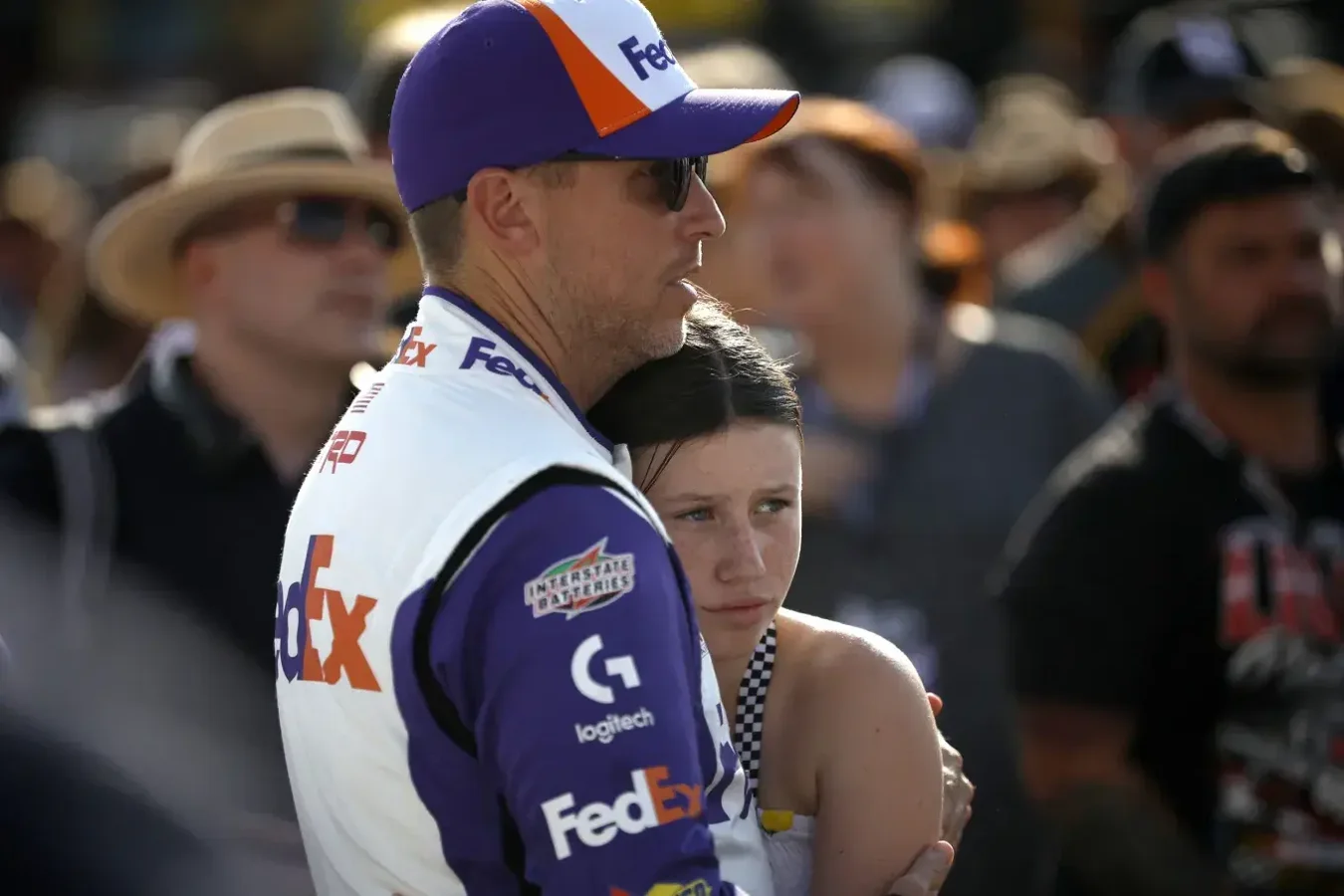The Denny Hamlin racing controversy escalated this week after a dramatic on-track incident at New Hampshire Motor Speedway, involving Hamlin and teammate Ty Gibbs, prompted calls for improved sportsmanship from inside the Joe Gibbs Racing organization. Chris Gabehart, JGR’s competition director, called for discussions on racing etiquette following Hamlin spinning Gibbs in the playoffs, with the aftermath affecting both team standings and morale.
Joe Gibbs Racing Voices Concerns After New Hampshire Incident
On Sunday, the second stage of the NASCAR race at New Hampshire Motor Speedway saw tensions rise as Ty Gibbs found himself ahead in 11th with just over 100 laps logged. Trailing him, Denny Hamlin and Christopher Bell were engaged in a spirited battle for track position. Hamlin, driving the No. 11 car and pressing for position, maneuvered to the inside of Gibbs’ No. 54, leading to critical contact between the teammates.
The contact from Hamlin’s car clipped the left rear quarter panel of Gibbs, causing Gibbs to spin and prompting a caution flag. Although Gibbs managed to get his car back on track, a broken toe link forced him to head to the garage, ultimately bringing his race to an early end. The incident left Joe Gibbs Racing to confront the challenges and pressures unique to competitive playoff racing, as all three drivers witnessed the incident’s immediate trajectory-altering consequences.
Chris Gabehart Seeks Unified Approach and Clear Etiquette
As the incident drew immediate scrutiny, Joe Gibbs Racing’s competition director Chris Gabehart addressed the matter publicly, emphasizing the need for honest internal conversations about handling close racing situations, especially with playoff stakes high. In comments captured and circulated by reporter Matt Weaver, Gabehart stated:
“Yeah, you know, we’ve just gotta get a better understanding of, you know, proper racing etiquette or situations, and the playoffs, or a certain situation, and we’ll just have to talk through it and get everybody’s point of view and figure out how to move forward as one after that.” [2:00 onwards]
– Chris Gabehart, Competition Director, Joe Gibbs Racing
He added, “Denny thought he was gonna have more space than he had, so he made an entry with that expectation, and then when he had less space than he had, you can’t just stop these big things on a dime when you’re loaded up like that. You’ve heard Denny and the other guys mention it many times; you’ve got to guess going into the corner what other guys are there, when you guess wrong, sometimes an error can be made.”
– Chris Gabehart, Competition Director, Joe Gibbs Racing
The remarks reflect the challenges faced by drivers when split-second guesses about positioning can lead to unintentional errors, especially under race conditions that offer little room for adjustment.
Why JGR Delayed the Suspension of Hamlin’s Pit Crew
The Denny Hamlin racing controversy continued off-track when attention shifted to Joe Gibbs Racing’s decision to defer the suspension of two pit-crew members. Following an earlier incident at Bristol Motor Speedway—where Hamlin’s car lost a right-front wheel after a collision with A.J. Allmendinger—NASCAR issued two-race bans to front tire changer Austin Maloney and jackman Joel Bouagnon.
JGR exercised its right to postpone the crew suspensions by one week, allowing both Maloney and Bouagnon to participate in the New Hampshire event, a move explained by Denny Hamlin to reporter Bob Pockrass. Hamlin highlighted considerations specific to different track layouts:
“I think it was an obvious decision simply because you know pit stops are not as crucial at the Roval as what is it what they would be here or Kansas here because of track position. You’re going to get a much larger field spread at Roval. You’re typically going to pit under green there so a stop that’s a second slower is not going to be as detrimental. So it just makes sense with the rules that were given to defer one week.”
– Denny Hamlin, Driver, Joe Gibbs Racing
The suspension follows Joe Gibbs Racing’s attempt to optimize performance by retaining experienced crew members for key races, illustrating the strategic importance of pit stop crews in critical moments.
“Certainly not having the same guys that we’ve always had will have some sort of an impact but I mean you know you never know it could be just as good,” he added.
– Denny Hamlin, Driver, Joe Gibbs Racing
The crew penalty was issued after Hamlin’s car was penalized for losing a wheel in competition, resulting in a two-lap penalty that left Hamlin finishing 31st. The short-term reshuffle in Joe Gibbs Racing’s crew makes upcoming races a bigger test of adaptability and teamwork.
The Broader Impact on Joe Gibbs Racing and NASCAR
This latest Denny Hamlin racing controversy highlights both the tensions within high-performing NASCAR teams and the complexities of managing high-stakes racing environments. With drivers like Ty Gibbs, Christopher Bell, and Denny Hamlin all at the center of competitive frictions, Joe Gibbs Racing must balance team unity, driver development, and aspirations for championship contention.
The comments from Chris Gabehart and Denny Hamlin underline the need for a unified approach to race conduct and the challenges every race team faces when mistakes occur under pressure. As the series advances, the spotlight will remain on how JGR navigates its internal dynamics, balancing competition between teammates and maintaining the organizational standards expected of a leading NASCAR operation. What happens next will depend on both team dialogue and the ability of drivers and crew alike to adapt and refocus for the remaining races of the playoffs.
Joe Gibbs Racing competition director Chris Gabehart on Hamlin and Gibbs plus 'here come the yellow cars.' pic.twitter.com/Kem6zJglY2
— Matt Weaver (@MattWeaverRA) September 21, 2025
